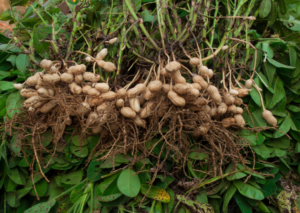Introduction
India, an agrarian country, has a diverse agricultural landscape due to its varied climatic conditions, soil types, and irrigation facilities. Every state has its own unique agricultural identity, contributing significantly to the nation’s economy. Let’s explore Indian agriculture state by state.
1. Agriculture in Punjab – The Granary of India
Punjab is known for its wheat and rice production, thanks to the Green Revolution. The state extensively uses modern farming techniques and high-yield varieties.
Major Crops:
- Wheat
- Rice
- Maize
- Sugarcane

2. Haryana – The Second Green Revolution State
Haryana follows Punjab in adopting modern agricultural practices. It produces surplus food grains for the nation.
Major Crops:
- Wheat
- Rice
- Mustard
- Barley

3. Uttar Pradesh – The Largest Food Producer
Uttar Pradesh (UP) leads in sugarcane and wheat production. The fertile Gangetic plains make it ideal for farming.
Major Crops:
- Sugarcane
- Wheat
- Paddy
- Potato

4. Rajasthan – The Land of Desert Farming
Despite arid conditions, Rajasthan is known for millet and pulses. Water conservation techniques like drip irrigation are widely used.
Major Crops:
- Bajra (Pearl Millet)
- Wheat
- Gram
- Mustard

5. Madhya Pradesh – The Soybean Hub
MP is the largest producer of soybean and pulses, contributing significantly to oilseed production.
Major Crops:
- Soybean
- Wheat
- Gram
- Maize

6. Maharashtra – Leading in Horticulture and Cash Crops
Maharashtra is famous for its horticulture, sugarcane, and cotton production.
Major Crops:
-
- Cotton
- Sugarcane
- Grapes
- Mangoes

7. Gujarat – The Cotton and Groundnut Giant
Gujarat is a major player in cotton and groundnut production, benefiting from its semi-arid climate.
Major Crops:
- Cotton
- Groundnut
- Castor
- Onion

8. West Bengal – Rice Bowl of India
West Bengal has fertile soil and abundant water resources, making it the largest producer of rice.
Major Crops:
- Rice
- Jute
- Potato
- Tea
9. Bihar – A Growing Agricultural Powerhouse
Bihar’s fertile plains support multiple crops, with a focus on paddy and wheat.
Major Crops:
- Rice
- Wheat
- Maize
- Litchi
10. Tamil Nadu – Leader in Horticulture and Spices
Tamil Nadu has diversified agriculture, producing fruits, spices, and rice.
Major Crops:
- Rice
- Banana
- Coconut
- Pepper
11. Kerala – The Spice Garden of India
Kerala is known for its spice plantations, benefiting from tropical monsoons.
Major Crops:
- Coconut
- Black Pepper
- Cardamom
- Rubber
12. Karnataka – A Mixed Crop State
Karnataka produces cereals, pulses, and cash crops, with high coffee production.
Major Crops:
- Coffee
- Sugarcane
- Ragi
- Mangoes
13. Andhra Pradesh – Rice and Fisheries Hub
Andhra Pradesh has extensive irrigation systems supporting rice and aquaculture.
Major Crops:
- Rice
- Tobacco
- Chillies
- Cotton
14. Telangana – The New Agricultural Force
Telangana has emerged as a key agricultural state, focusing on pulses and cotton.
Major Crops:
- Cotton
- Turmeric
- Maize
- Paddy
15. Odisha – Rice and Fisheries Leader
Odisha relies heavily on monsoons and produces ample rice and fisheries.
Major Crops:
- Rice
- Groundnut
- Pulses
- Cashew
Conclusion
India’s agricultural diversity ensures food security and economic growth. Each state has its strengths, contributing uniquely to the country’s agrarian economy. With sustainable practices and technological advancements, Indian agriculture continues to thrive.
FAQs
1. Which state in India produces the most wheat?
Uttar Pradesh is the largest producer of wheat in India.
2. Why is Punjab called the Granary of India?
Punjab is known for its high production of wheat and rice due to fertile land and irrigation facilities.
3. Which state is famous for spices?
Kerala is renowned for its production of black pepper, cardamom, and other spices.
4. What is the main cash crop of Maharashtra?
Maharashtra is a leading producer of sugarcane and cotton.
5. Which state is the top producer of rice in India?
West Bengal leads in rice production due to its fertile delta region.

